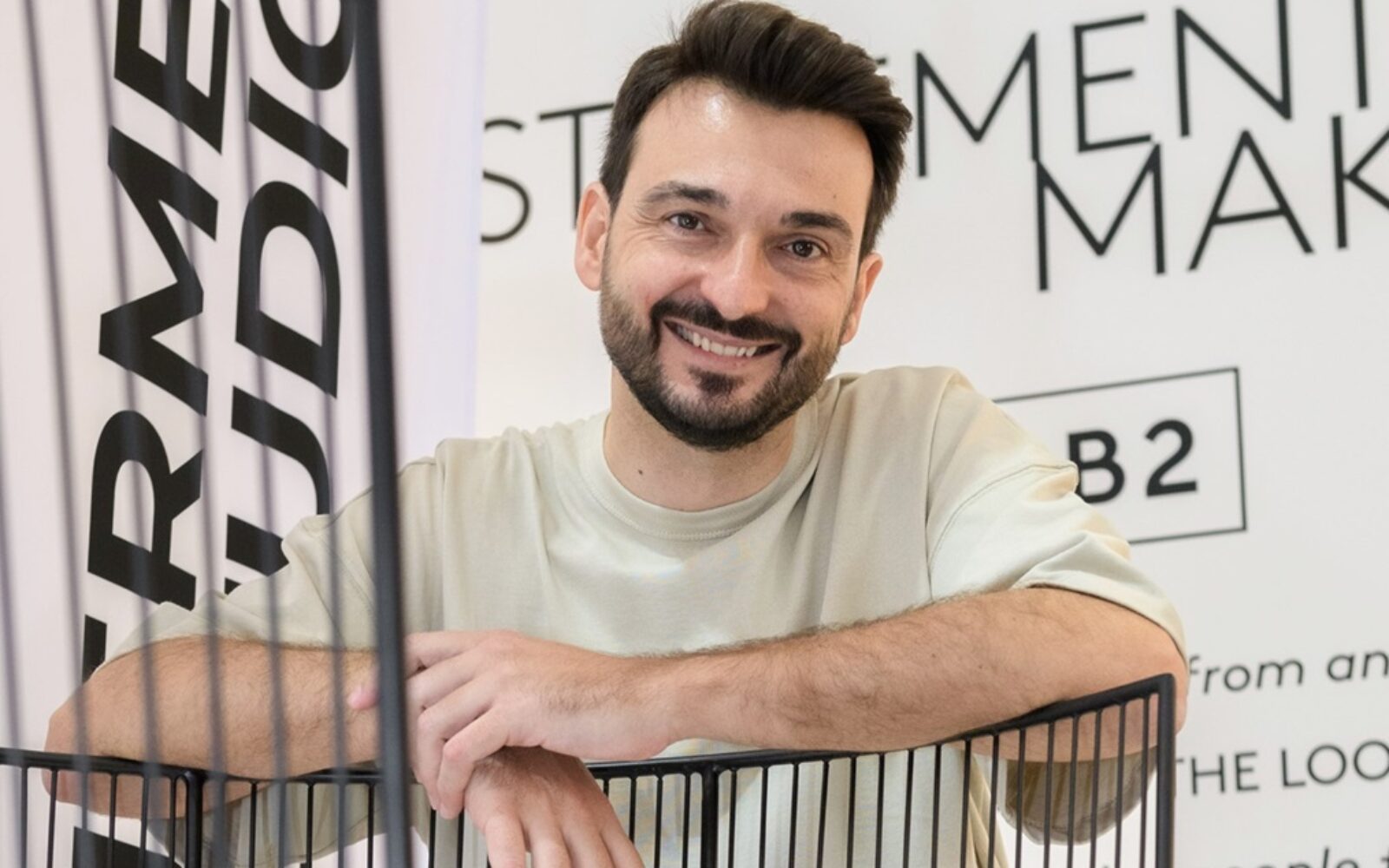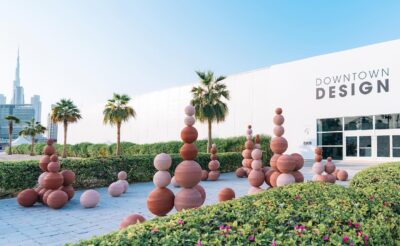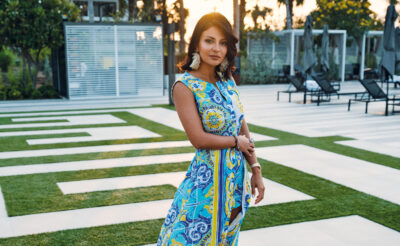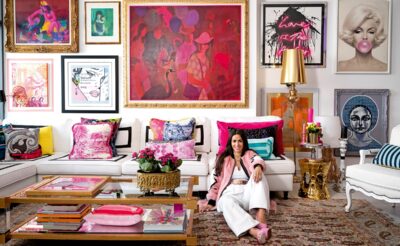With Dubai Design Week having officially wrapped its tenth edition this month, MOJEH speaks to Barcelona-based Alex Estevez, co-founder of Mermelada Estudio design studio, about the importance of design fairs for emerging talents, his long-standing relationship with CB2 and the life-changing advice he shares with his students
You began your partnership with CB2 twelve years ago at a design fair similar to Downtown Design. How do you feel design fairs nurture emerging talents?
The question is an interesting one. In my experience, design fairs have proven to be an excellent platform for gaining visibility. Nowadays, social media also plays a significant role. I know of designers who have successfully built their careers without ever participating in an exhibition, thanks to these digital channels.
While this is a positive development, I still firmly believe that design fairs offer unique benefits that social media cannot replicate. Meeting people in person, explaining your creative perspective, observing real-life reactions, and physically interacting with the pieces provides a more robust experience.
Seeing the creatives showcasing works at Dubai Design Week, how would you say the vision of regional designers differs from others you have seen around the world?
This is my second time visiting Downtown Design and I continue to be awed by the differing styles and design languages across the world. Designers in this region excel in blending heritage with technology; you can see many elements of their cultural identity embedded in the details, whilst they also propose high-tech materials and production processes.
How has CB2 celebrated and nurtured both emerging and established designers?
The way that CB2 selects its collaborators is a perfect balancing act. The brand doesn’t create a piece simply because it is designed by a famous person, but because it has an interesting design. Fame does not matter; quality, crafstmanship and originality are the central tenants. It is amazing to see how pieces from iconic and established designers co-exist alongside furniture and decor from emerging designers, from all over the world.
View this post on Instagram
What is the design philosophy at Mermelada Estudio?
Our design philosophy revolves around discovering the poetry in design and achieving a harmonious rhythm by combining shapes, materials, textures, and colours. We aim to create what we call “sculptural simplicity” by continuously exploring new ways to blend concepts, such as tradition and modernity.
How do you convey a message through design?
To effectively convey a message through design, one must first establish a visual code. At Mermelada Estudio, we liken this code to a folding fan. The extent to which we open it varies based on a range of factors such as each project’s unique requirements, the specific client’s objectives, and the target audience’s preferences. This approach enables us to craft designs that are not only aesthetically pleasing but also purposefully aligned with the desired communication objectives.
What is your favourite piece you have designed in collaboration with CB2?
Selecting a single favourite is a challenging task given the multitude of choices we have designed across our 12-year partnership, but if I had to pick one I would say the Matra chair.
The use of ethically sourced materials is central to CB2. How do sustainable practices impact the design process?
Sustainability is as inherent to our design process as functionality. It is crucial for guiding our projects, and CB2 places sustainability as a non-negotiable element in our design briefs. Our design process with CB2 is akin to a dynamic exchange, where ideas are volleyed back and forth until we arrive at the ideal solution for us both, our customers and the environment.
We are a design studio that consistently embraces an open and collaborative approach in every project, fostering meaningful dialogues and engaging all stakeholders. Additionally, as educators at IED University, we emphasise the significance of sustainability to the upcoming generations of designers. It’s vital that we remain conscientious about our planet’s well-being and continually work towards responsible design practices.
View this post on Instagram
How can consumers ensure they are shopping sustainably?
While there are numerous sustainability certifications that companies can obtain, serving as valuable references, the best approach for consumers is to stay informed and be curious. As consumers, we must demand transparency regarding how products are made, the materials used, and their recyclability. It is also important to buy pieces that we love and have been crafted to last, as opposed to throw-away furniture and decor.
As a lecturer, what is the most important piece of advice you give to students?
Some time ago, a friend from Belarus shared an insightful metaphor with me. He said that when becoming a father, a friend of his gave two gifts to his baby: a sturdy doll and a spinning top. The doll teaches us to harness the energy of falling to rise with renewed vigor, while the spinning top reminds us to maintain balance and stay active, continually turning. I found this metaphor so powerful that I bought these toys for my own child. It’s a piece of advice I love to impart to my design students: relentlessly pursue your dreams, never shy away from taking risks, and keep pushing forward.
Which current design trend is your favourite and which do you hope never returns?
We don’t tend to adhere to design trends. If I had to choose one that resonates with us, it would be the mid-century style, given its shapes and materials and its simple, refine and sophisticathed aesthethic. It can be challenging to select a style that won’t become outdated. I believe that any style, when reinterpreted effectively, has the potential to evolve and take on new timeless forms.
Have you noticed any region-specific design trends?
In today’s interconnected world, most regions tend to follow similar design trends. The omnipresence of social media and global connectivity has led to a convergence in tastes and trends, perhaps a drawback of globalisation. Sitting in a café in Barcelona, one might feel they could be anywhere in the world – both in terms of fashion and conversation topics.
Designers therefore play a key role in preserving regional cultural heritage. For instance, I have observed that many designers from GCC countries place significant emphasis on preserving and drawing inspiration from their rich history through colour and materiality.
What are the design trends to look out for this season?
It’s challenging to predict, but vintage modern trends are likely to maintain their strong influence this season. Explore Mermelada Estudio x CB2 here
Read Next: Dubai Restaurants Are Coming Together To Raise Funds For Gaza





